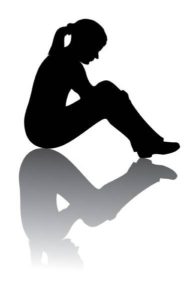
Tap on ABC of anxiety to feel calm

Those who’ve experienced anxiety know that it entails worry, tension, catastrophic thoughts, physical sensations in the body etc. So in a way, there are specific components that make up anxiety. In Cognitive behaviour therapy sessions, I give a form to my clients, called the ABC form [A – activating event, B – beliefs and thoughts, C – consequences – emotions and behaviour] There is also a section in the form for rating the sensations in the body. Now, if you add ‘movement’ and ‘5 sense perception’ to this, it makes it more complete. I’m calling these the components of anxiety.
5 sense perception, thoughts, emotions, sensations in body, activating event and movement – all these are significant components of anxiety that we need to address when we experience anxiety.
If you work on these components of anxiety, you will experience profound relief. Let me explain how this can be done with the help of a case example.
My client, B, got very anxious whenever she stepped out of the house. She experienced immense anxiety in the stomach with catastrophic thoughts and images of falling down the stairs, falling on the road, etc. While she was very calm and relaxed at home, going out made her anxious. We worked on some core events from her childhood that had paved the way for this anxiety. We also worked on the beliefs and secondary gain related to anxiety. We tapped on her catastrophic thoughts, wanting to escape from situations, made behavioural experiments (combining cognitive behaviour therapy and EFT) to release her anxiety. Over a span of 2 months, her anxiety reduced drastically. What brought about a significant change in her anxiety was when she started addressing anxiety as soon as she experienced it, on a daily basis, with the suggested guidelines.

I asked her to approach anxiety in the following way whenever she felt anxious:
Activating event/trigger – Stepping out of the house.
Even though I get very anxious when as I plan to step out of the house, I accept how I feel.
Sensations in the body – Tightness in chest and heaviness in stomach.
She tapped on her fingertips, or simply pressed her fingertip points when she had sensations in her body. (We tapped on these scenarios in the sessions also)
Even though I have this tightness in my chest and heaviness in my stomach when I lock the door and leave the house, I choose to release this anxiety from my chest and stomach. I choose to calm my stomach.
Whenever she travelled by bus and was caught in a traffic jam, she would panic. So she started tapping on this:
Even though I have this sensation in my stomach and I feel this panic due to the traffic jam, I choose to release this anxiety from my stomach. I choose to calm and relax my stomach.
Thoughts: “What if I fall when I step on a bus!”
Even though I am having this thought right now, I am releasing it. I trust my body to keep me safe.
When she started focusing on her worries and doubts, they increased. So I asked her to tap before the doubts increased in their intensity.
Even though when my doubts cross a certain threshold, I am not able to control my thoughts, I feel helpless, I feel as if I cannot control the situation, I start feeling afraid, I choose to release that fear automatically in that moment.
Emotions: She was angry that she was getting anxious.
Even though I’m angry with myself, I choose to release this anger and replace it with compassion. I choose to be compassionate with myself. I choose to be gentle with myself.
5 sense perception: She got an image of falling off the bus.
Even though I see this image, I choose to change it and see myself safe and secure on the bus.
We didn’t tap on movement, but it helps to include that as explained below.
EXERCISE
Here is a simple exercise for you.
- Measure the intensity of Anxiety.
- Write down the specific components of anxiety, as given below.
- Tap on these components
- Measure intensity again.
COMPONENTS OF ANXIETY (Ideal for Daily tapping)
Activating Event– What triggered the anxiety? Was it a thought? Did something happen? Did someone say something? Are you going out?
Thoughts – What are the thoughts running in your head? Example- “What if I fall?”, “I cannot control my anxiety”.
Emotions: What are you feeling? Example- Fear of something terrible happening, anger for feeling anxious etc
Sensations in the body – What do you feel in your body when you’re anxious? What change in your body tells you that you have anxiety? Example – rapid breathing, sweating, tightness in chest, constriction in throat.
(5 sense perception and movement – Pat Ogden and Janina Fisher talk about this in sensoritmotor psychotherapy)
5 sense perception – Image/smell/taste/touch/sound. Do you see images when you get anxious? Do you get a funny smell? Do you have a peculiar taste in your mouth? Do you feel warm or cold? Do you hear something?
Movement – This is about noticing the changes in the movement of your body, like the posture of your body and gestures etc. Do you look down when you are anxious? Do you slump? Do your shoulders sag?
Change your posture and tap on it.
Even though I slump when I get anxious, I choose to sit straight.
Continue to tap this way at least once every day and see how you feel. Remember, this works best when you tap as soon as you feel anxious.
